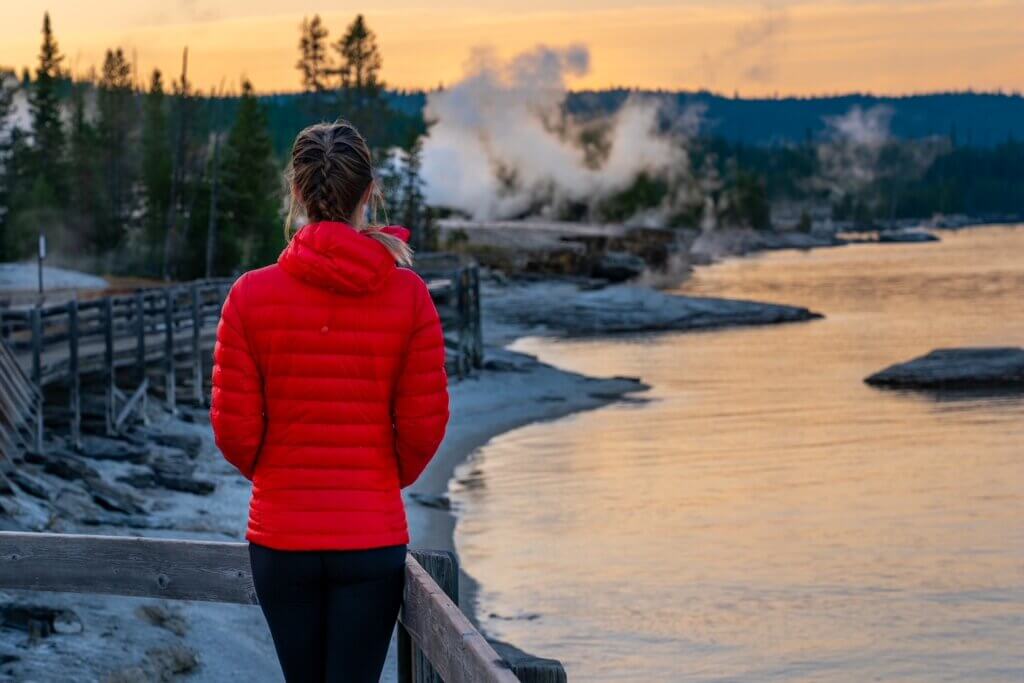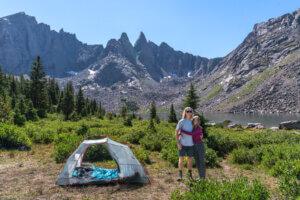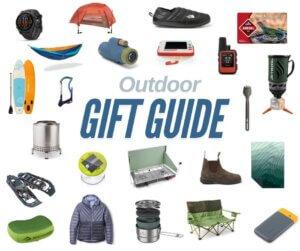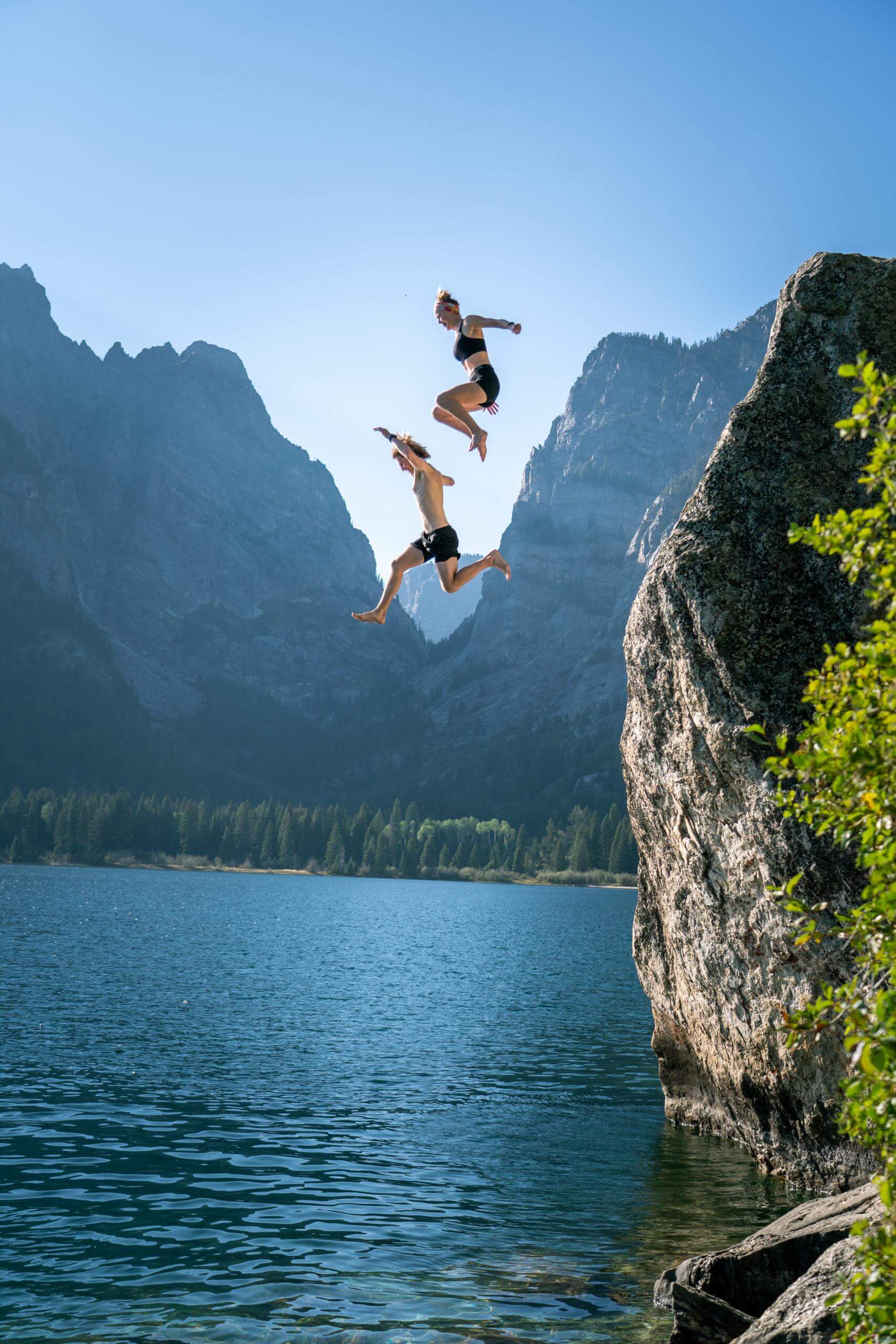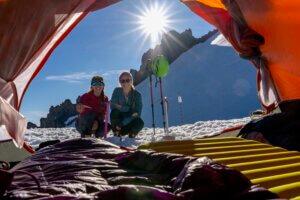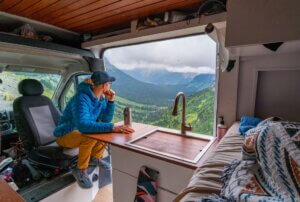What the hell even is Yellowstone National Park? – have you ever asked yourself this question? Trust me, you’re not alone! Yellowstone is WEIRD; the landscape is unpredictable, unexplainable, and there is 3,472 sq miles of this vast strangeness! It feels like an entirely different planet from the rest of the world.
Exploring Yellowstone is an experience that you must have at least once in your lifetime! It is the world’s FIRST national park and one of the largest ACTIVE super volcanos! It is home to half of the world’s hydrothermal features including an array of geysers, hot springs, mudpots, and fumaroles. While Yellowstone is sprawled out over three different states, it is surprisingly easy to explore and navigate. Even the non-hiker tourist can enjoy a lot of what the park has to offer.
Contents
| ***Disclosure: This post contains affiliate links. If you click one of them, I may receive a small commission (for which I am very grateful for) at no extra cost to you. |
When to Visit Yellowstone National Park
Spring, Late April-May
Spring brings melting snow and a transition period in Yellowstone. Weather conditions can be unpredictable, with temperatures ranging from 30°F to 60°F (-1°C to 16°C). Wildlife, including bears and newborn animals, become more active. While some roads and services may still be closed in early spring, most facilities start opening up by late may, and visitor numbers are lower compared to summer. If you are planning to visit during this time, be sure to check out the park’s operating hours and seasons page for the most up to date information on road openings!
Summer, June-August
Ah, you can never go wrong with summer! Summer means schools out, perfect camping weather, and more sunshine than rain. The park is bustling with visitors, and all services, facilities, and roads are open. You can enjoy hiking, wildlife watching, camping, and the iconic geothermal features. However, popular areas can be crowded, and advance reservations are recommended.
Fall, September-October
Fall is a beautiful time to visit Yellowstone as the park’s landscapes transform with vibrant autumn colors. The crowds start to thin out compared to summer, and the weather gradually cools down. Average temperatures range from 40°F to 70°F (4°C to 21°C). Wildlife, such as elk and bison are more active during this time!
Winter, November-March
Winter in Yellowstone offers a unique and serene experience. The park is covered in snow, which creates a stunning winter wonderland. Many roads are closed to regular vehicles, but you can access the park through guided snow coach tours or snowmobiles. Average temperatures range from 0°F to 20°F (-18°C to -7°C). Activities that you can do include cross-country skiing, snowshoeing, wildlife watching, and enjoying the geothermal features with steam rising against the snowy backdrop. Keep in mind that services and facilities are limited during winter.
It’s worth noting that weather conditions can vary, and unexpected changes can occur at any time of the year in Yellowstone. You should always check the park’s official website or contact the visitor centers for the latest updates on road closures, weather conditions, and any potential alerts or restrictions.
Where to Stay in Yellowstone National Park

Yellowstone National Park offers various options for accommodation depending on your preferences and the time of year you visit. We tend to always stay on BLM Land near the park because it is free BUT it’s not for everyone- (What is BLM Land for more info). If you’re looking for somewhere established to stay, check out one of these options below!
When planning your stay in Yellowstone, you should consider consider factors such as level of comfort, budget, proximity to attractions, and availability of accommodations. Be sure to make reservations well in advance during the peak summer season, as accommodations can fill up quickly.
Lodges & Hotels
Yellowstone National Park has a selection of lodges and hotels located in different areas of the park. Some popular lodges include Old Faithful Inn, Lake Yellowstone Hotel, and Canyon Lodge. These accommodations have convenient access to park attractions and often offer dining options and amenities BUT they’re very pricey!
Yellowstone National Park Campgrounds
Yellowstone offers numerous campgrounds for tent camping and RV camping. The campgrounds are located throughout the park and provide an immersive outdoor experience! Some campgrounds offer basic amenities like restrooms and water, while others provide additional services such as showers and laundry facilities. Reservations are highly recommended, especially during the peak season.
Backcountry Camping
If you’re seeking a more adventurous experience, backcountry camping is an option in Yellowstone. Backcountry camping allows you to explore more remote areas of the park and experience its natural beauty. Permits are required for overnight stays, and regulations and safety guidelines must be followed.
RV Parks and Private Campgrounds
Outside the park boundaries, there are RV parks and private campgrounds that have additional amenities such as full hookups, showers, and recreational facilities. These options can be convenient if you’re traveling in an RV or prefer more amenities than what the park campgrounds provide.
West Yellowstone and Gardiner
The towns of West Yellowstone, Montana, and Gardiner, Montana, are located near the park entrances and offer a range of lodging options including hotels, motels, cabins, and vacation rentals. Staying in these towns provides easy access to the park and allows you to explore nearby attractions outside the park boundaries.
What to Pack for Yellowstone
Shoes: We LOVE these Salomon’s in women’s and men’s!
Pack: A good day pack makes ALL the difference! We both use this 30L Ortovox pack. It’s the perfect size for day hiking and we love that it unzips all of the way down the front!
Sun protection: a brimmer hat and sun hoodie (women’s and men’s) are essentials in the sun!
Cooler: Keep a few snacks and drinks cool in the car with this affordable soft sided cooler! It’s a game changer on a hot day!
Water: Be sure to bring a water bladder for your daypack. Plus this packable water cube and a reusable water bottle are great to keep in the car!
Snacks: Make sure to pack some trail snacks too! We love these meal replacement bars (although we use them as a snack not a meal!)
First aid kit: Just this standard first aid kit should suffice if anything were to happen on the trail!
Light: A headlamp and extra batteries are important to carry in case you are out hiking later than you suspect.
OF COURSE you should always carry the 10 essentials as appropriate to your hike & environment! 🙂
Hiking in Yellowstone National Park
When going on any hike in Yellowstone, it’s essential to be prepared with proper gear, carry sufficient water, and be aware of wildlife and safety guidelines. You should ALWAYS check trail conditions and consult with park rangers for the latest information before setting out on a hike. OKAY, now that we’ve gotten that disclosure out of the way… let’s get to the hikes!
Grand Prismic Spring
*Midway Geyser Basin Trailhead
0.7 mi loop
50 ft elevation gain
OR
*Fairy Falls Trailhead
3.2 mi out and back
200 ft elevation gain
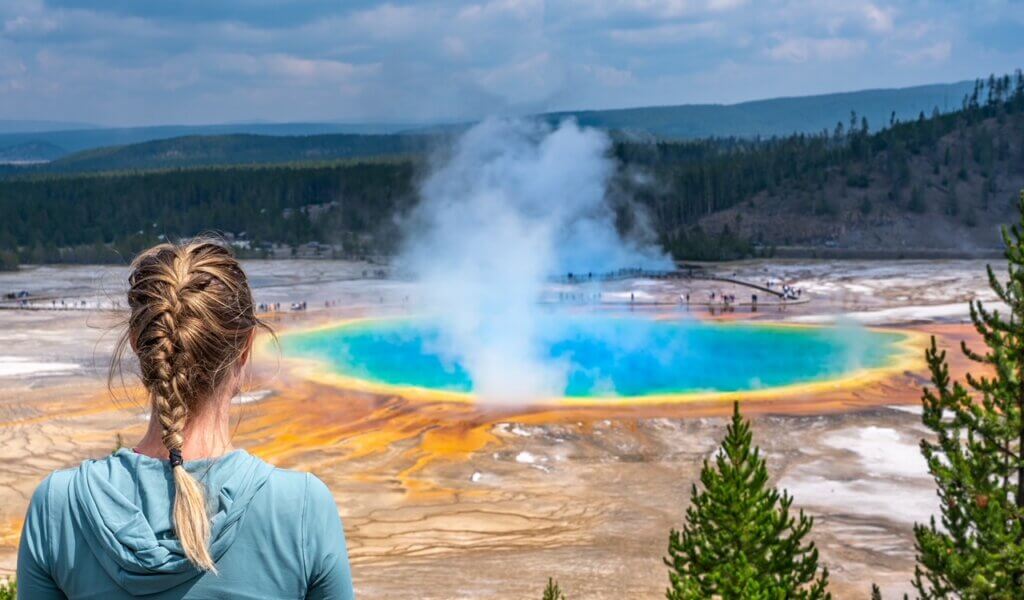
The Grand Prismatic Spring is located in the Midway Geyser Basin, which is part of the Upper Geyser Basin in the park. There are two ways you can reach the spring: from the boardwalks at the Midway Geyser Basin Area or from the Fairy Falls Trail.
The boardwalk hike offers a close-up view of the spring’s vibrant colors, while the fairy falls hike offers a bird’s eye view of the spring! I highly suggest doing both as they provide entirely different vantage points of the Grand Prismatic!
Fairy Falls Trail
4.8 mi out & back
200 ft elevation gain
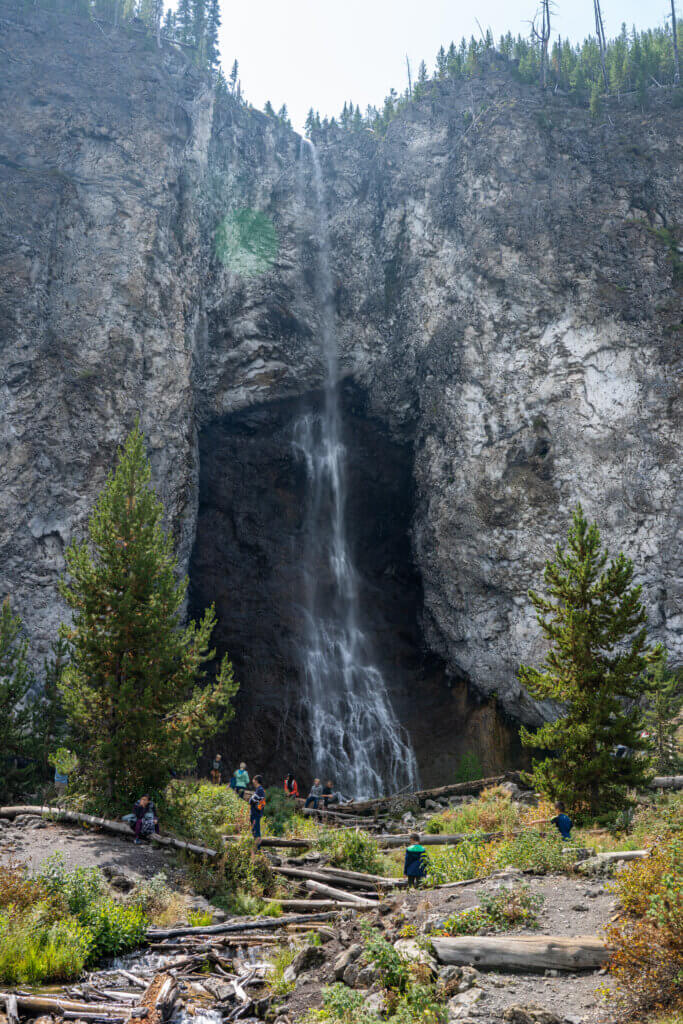
After enjoying the Grand Prismic Overlook Trail you MUST continue onward to Fairy Falls. It is a beautiful waterfall that cascades down a 197-foot drop. Not one to be missed!
Observation Point + Upper Geyser Basin Loop
5.0 mi loop
400 ft elevation gain
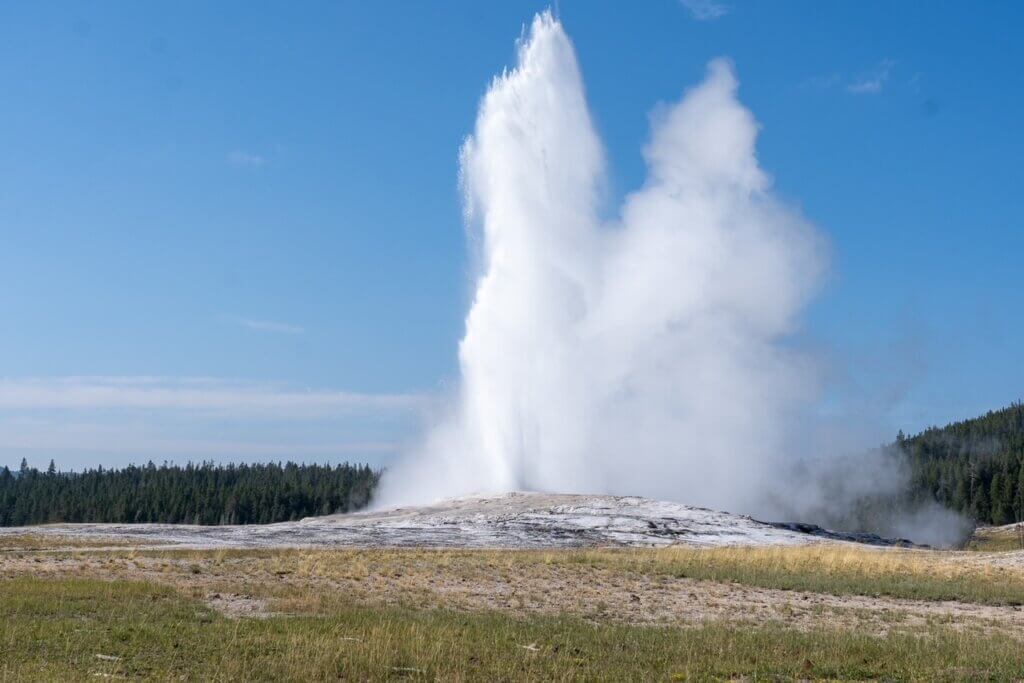
Observation Point is a trail located in the Upper Geyser Basin, offering panoramic views of the area, including Old Faithful. Old Faithful is one of the most iconic geysers in the world and is known for its regularly scheduled eruptions. It typically erupts every 60 to 90 minutes, shooting water and steam high into the air.
Once you reach Observation Point, you’ll be rewarded with sweeping views of the Upper Geyser Basin, including Old Faithful, the surrounding geysers, and the vast landscape beyond. It’s a fantastic spot to take in the beauty of the area and witness eruptions from a different perspective.
After enjoying observation point, continue the loop of the upper geyser basin to enjoy various geothermal features and different viewpoints of the geysers in the basin!
Mystic Falls Trail
2.4 out and back
150 ft elevation gain
The Mystic Falls trail winds through a beautiful forested area, offering glimpses of geothermal features along the way. The trail follows the meandering Little Firehole River and gradually ascends towards Mystic Falls.
Lone Star Geyser
5.3 mi out and back
150 ft elevation gain
This trail is WAY less popular than its famous counterparts which means the trail tends to be much less crowded! The highlight of the hike is reaching the Lone Star Geyser itself. Lone Star is a cone geyser known for its regular eruptions. It erupts approximately every three hours, shooting water up to 45 feet high. The eruptions can last for about 30 minutes!
You should pack a picnic lunch to enjoy if you plan to wait for the geyser to erupt.
Mammoth Terraces
2.2 mi loop
350 ft elevation gain
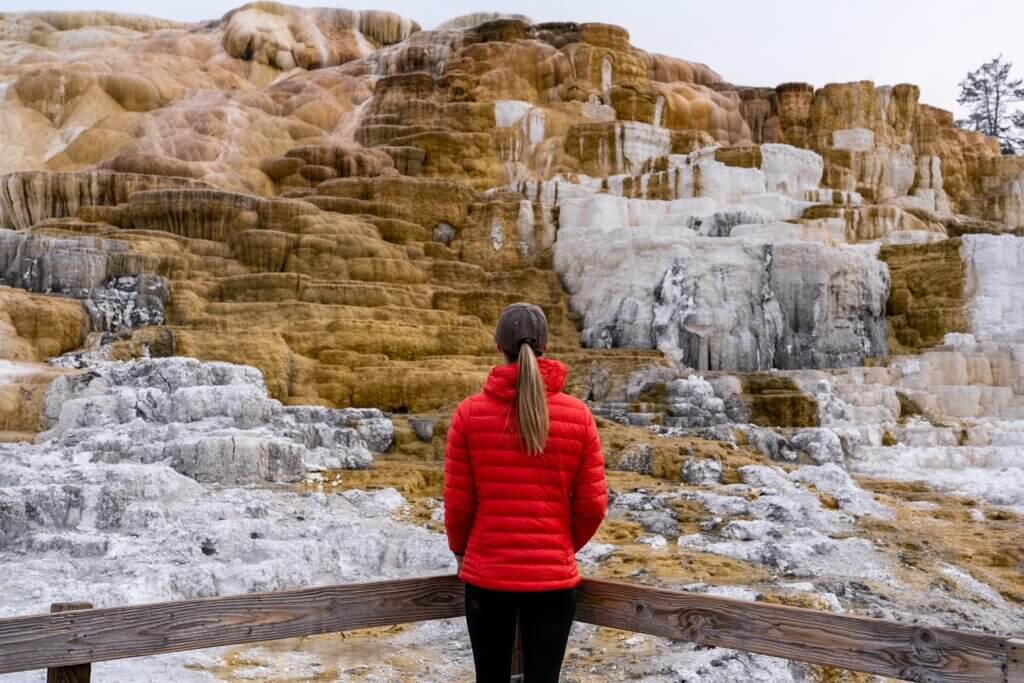
The Mammoth Terraces are a series of travertine terraces formed by the flow of hot water from underground geothermal features. The terraces are made up of primarily limestone mineral deposits that create stunning, cascading formations resembling frozen waterfalls or terraced pools. They are stunning to see and worth a stop!
West Thumb Geyser Basin Trail
1.0 mi loop
60 ft elevation gain
The West Thumb Geyser Basin is known for its hydrothermal features, which include hot springs, geysers, mud pots, and fumaroles. What makes this area particularly fascinating is its proximity to Yellowstone Lake. There are even some geothermal features that extend into the lake itself.
Norris Geyser Basin Complete Loop
2.9 mi loop
190 ft elevation gain
Norris Geyser Basin is one of the most geologically active and dynamic thermal areas in Yellowstone National Park. The basin is known for its geysers, hot springs, steam vents, mud pots, and fumaroles.
Brink of the Lower Falls Trail
0.8 out and back
270 ft elevation gain
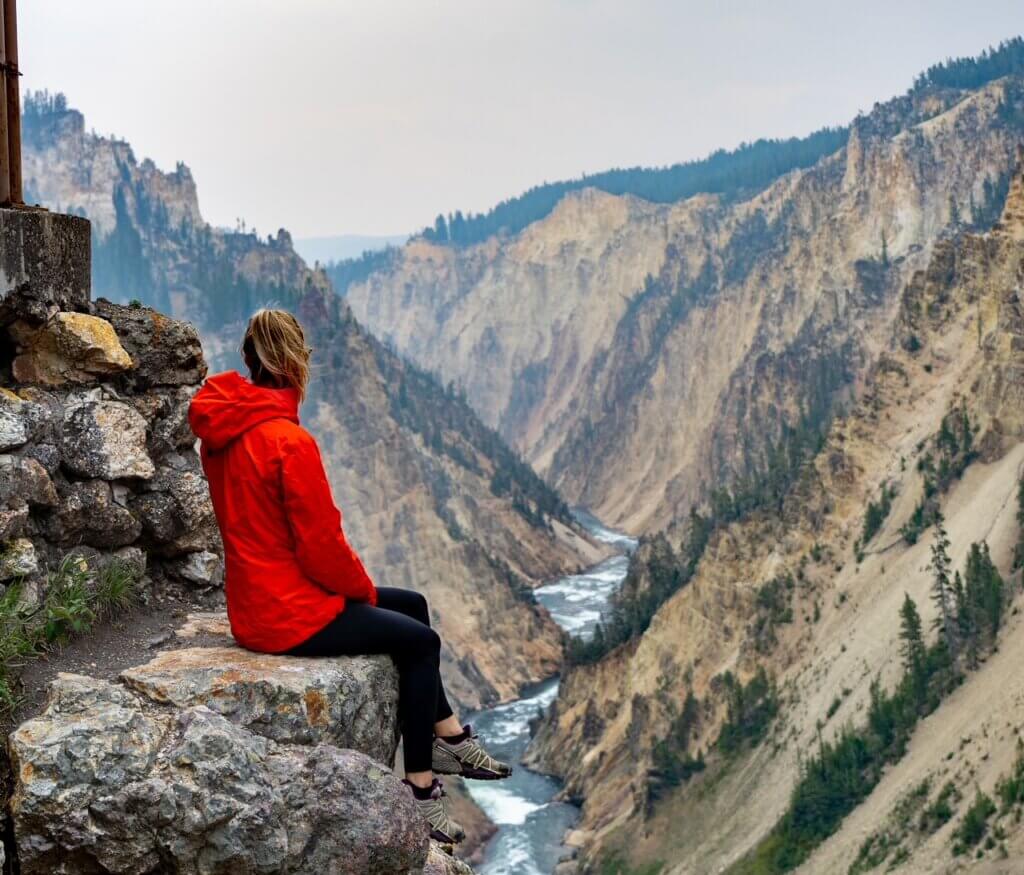
This is located on the North Rim of the Grand Canyon of Yellowstone. This was my favorite viewpoint of the entire trip!! This short but steep trail leads you to an epic viewpoint of the lower falls.
Other Hikes to consider on the North Rim:
- Lookout Point
- Red Rock Point
- Grand View
- Inspiration Point
Uncle Toms Trail
PERMANENTLY CLOSED
Other Hikes to consider on the South Rim:
- Sunset Point
- Upper Falls View
- Artist Point
Dunraven Pass to Mt. Washburn
6.8 mi out and back
1400 ft elevation gain
If you’re looking for a challenge, then add this one to your list! As you ascend Mount Washburn, you’ll be rewarded with breathtaking views of the surrounding landscapes. From the summit, you can enjoy panoramic vistas of the Yellowstone Caldera, the Absaroka Range, and the Grand Canyon of the Yellowstone. On clear days, you may even catch a glimpse of the Tetons in the distance.
Non-Hiking Activities
While hiking is a popular activity in Yellowstone National Park, there are plenty of non-hiking activities to enjoy as well!
Wildlife Viewing
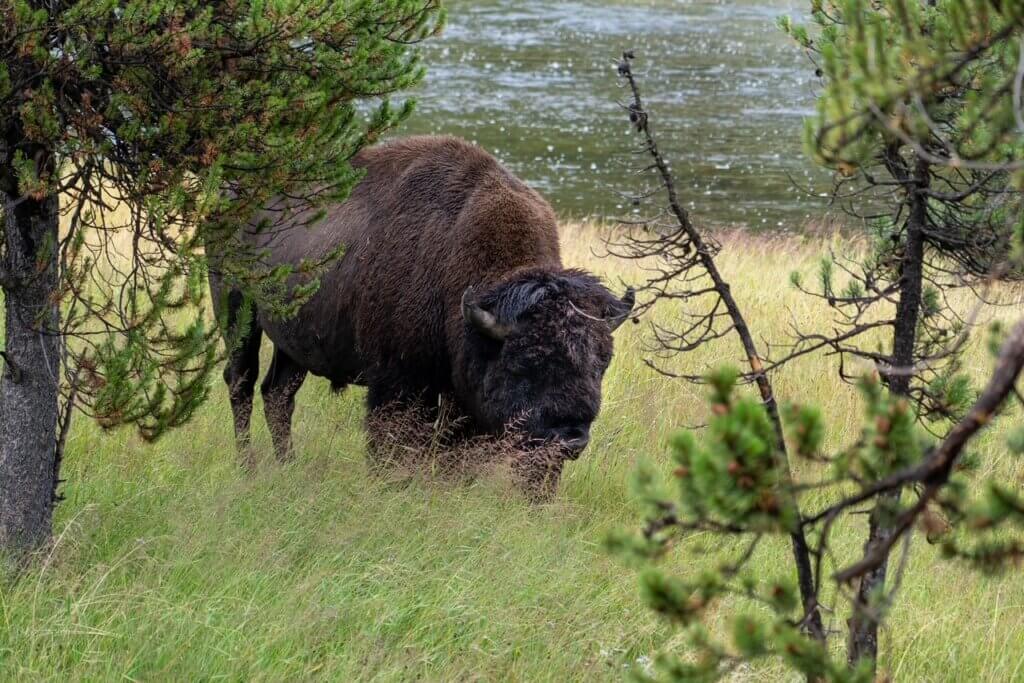
Yellowstone is renowned for its diverse wildlife. You should DEFINITELY take a wildlife watching tour! If you’d rather opt out of a “tour” you should at least drive through Lamar Valley, Hayden Valley, or the Northern Range as these are which are prime areas for spotting animals. Remember to maintain a safe distance and observe animals from a respectful distance!!
Scenic Drives
Yellowstone offers breathtaking scenic drives that allow you to appreciate the park’s natural beauty. The Grand Loop Road takes you through various attractions, including the Grand Canyon of the Yellowstone, Yellowstone Lake, and the Tower Fall area. Be sure to stop at ALL the viewpoints for photo opportunities and to enjoy the vistas.
Geothermal Features
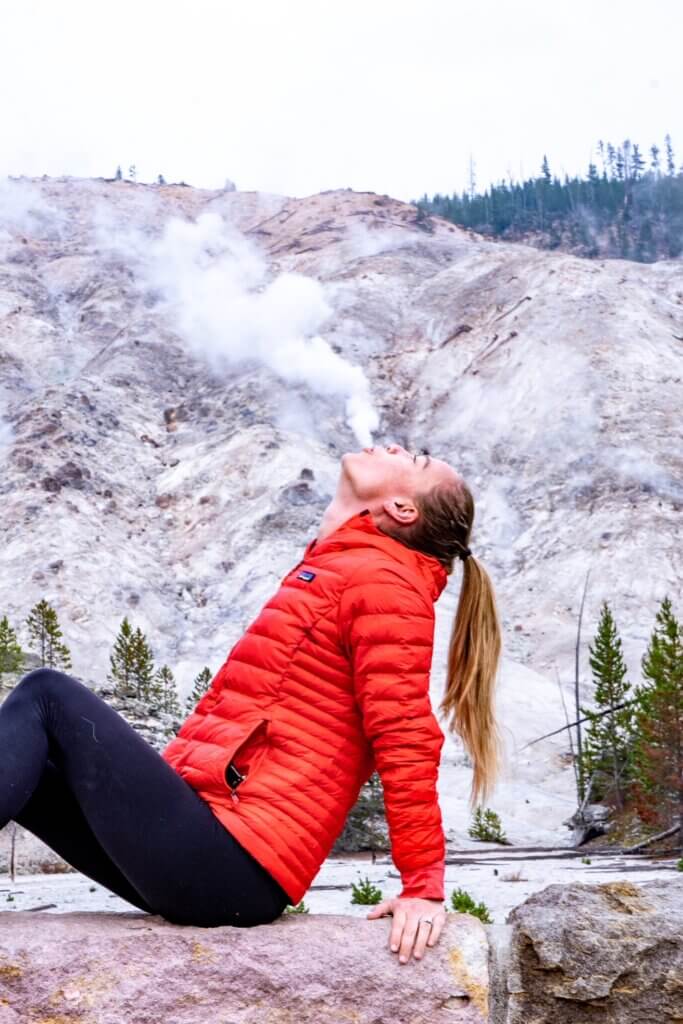
Yellowstone is home to numerous geothermal features, including the famous Old Faithful geyser. Explore the boardwalks around the Upper Geyser Basin to witness erupting geysers, colorful hot springs like Grand Prismatic Spring, and bubbling mud pots. The Norris Geyser Basin and Mammoth Hot Springs are also worth visiting! These are all “east walking paths” that don’t require “hiking skills”.
Boating and Fishing
Yellowstone Lake offers opportunities for boating, kayaking, and fishing. You can rent boats or bring your own to explore the lake’s pristine waters. We’re not big “fisher’s” per say, but we’ve been told that the lake is a fisherman’s paradise!
Ranger Programs and Visitor Centers
Attend ranger-led programs and presentations to learn about the park’s history, wildlife, and geology. Visitor centers, such as the Old Faithful Visitor Education Center and the Canyon Visitor Education Center provide exhibits, interactive displays, and information about the park’s features! Fun for kids AND adults!
Remember to follow park regulations, respect wildlife and natural resources, and prioritize safety while enjoying these non-hiking activities in Yellowstone National Park.
The Wildlife of Yellowstone National Park
Yellowstone National Park is home to a rich variety of wildlife, including both iconic and lesser-known species. Here are some of the notable wildlife species you can find in Yellowstone:
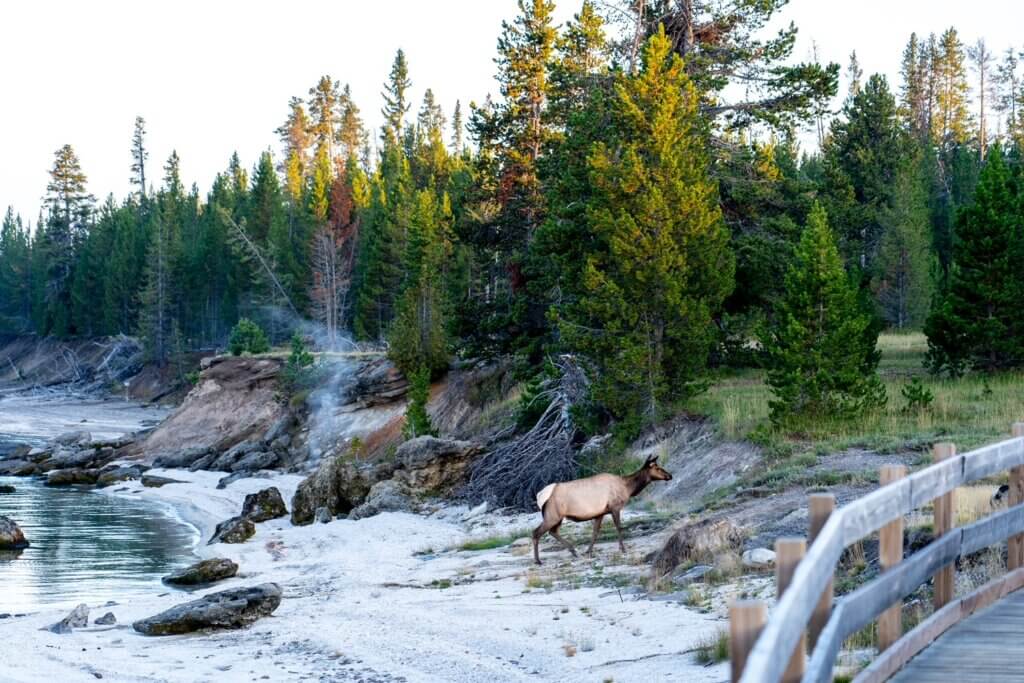
- Bison: Yellowstone is known for its large population of American bison, often considered one of the park’s symbols. These majestic animals can be seen grazing in the meadows and grasslands.
- Elk: Another common sight in Yellowstone, elk are abundant in the park. During the fall rutting season, male elk bugle and engage in impressive displays of dominance.
- Grizzly Bears and Black Bears: Yellowstone provides habitat for both grizzly bears and black bears. While sightings can be rare and require luck, these magnificent creatures roam the park’s forests and meadows.
- Wolves: Yellowstone is one of the few places in the United States where you can observe wild wolves. The park’s wolf reintroduction program has successfully brought back these apex predators, offering visitors a chance to see them in their natural habitat.
- Gray Wolves: Yellowstone is one of the few places in the United States where you can observe wild wolves. The park’s wolf reintroduction program has successfully brought back these apex predators, offering visitors a chance to see them in their natural habitat.
- Coyotes: Coyotes are frequently spotted throughout Yellowstone. They are adaptable and can be seen in various habitats, from meadows to forests.
- Moose: Although less common than other large mammals, moose can be found in areas such as the park’s northern range and wetlands. They are most often seen near lakes and rivers.
- Bighorn Sheep: These sure-footed animals inhabit the rocky terrain of Yellowstone’s mountains. They can be observed scaling steep slopes and cliffs.
- Pronghorn: Pronghorn are the fastest land mammals in North America. They inhabit the park’s grasslands and can be seen sprinting across vast open spaces.
- Birds: Yellowstone is a haven for birdwatchers, with over 300 bird species documented in the park. Species such as bald eagles, ospreys, sandhill cranes, and various types of owls can be observed.
Always remember to maintain a safe distance and observe animals from a respectful distance to ensure both their safety and your own!
Travel Tips
- Plan and Book in Advance: Yellowstone is a popular destination, especially during the summer months. To secure accommodation, campsites, and popular activities, it’s advisable to make reservations well in advance.
- Check Current Conditions: Before your trip, check the official Yellowstone National Park website or contact visitor centers for updates on road closures, weather conditions, trail closures, and any alerts or warnings.
- Download GuideAlong! GuideAlong is a road-trip app with an in an app tour guide that uses offline navigation to guide you through the park, noting all the stops to make and the history of the Park itself! We recommend this for ALL National Parks and landmarks.
- Allow Ample Time: Yellowstone is vast, and there is much to see and do. Plan to spend several days in the park to explore its different regions and attractions thoroughly.
- Be Prepared for Changing Weather: Yellowstone’s weather can be unpredictable, even in the summer. Pack layers of clothing, including warm and waterproof options. Carry a rain jacket, hat, sunscreen, insect repellent, and sturdy footwear for outdoor activities.
- Follow Park Regulations: Respect park regulations and guidelines to protect the park’s wildlife, natural resources, and your own safety. Stay on designated trails, do not approach or feed wildlife, and properly dispose of trash.
- Carry Bear Spray: If you plan to hike in Yellowstone, especially in bear country, it’s recommended to carry bear spray and learn how to use it effectively. Familiarize yourself with bear safety guidelines and hike in groups whenever possible.
- Stay Alert for Wildlife: Keep a safe distance from wildlife and never approach or feed them. Use binoculars or a telephoto lens to observe animals from a respectful distance. Be particularly cautious around bison, as they can be unpredictable and charge if they feel threatened.
- Get an Early Start: To beat the crowds and increase your chances of wildlife sightings, start your day early. Many animals are more active during the early morning and late evening hours.
- Carry Water and Snacks: Stay hydrated by carrying water with you at all times. Pack snacks or picnic supplies to enjoy meals during your park exploration.
- Practice Leave No Trace: Respect the park’s natural environment by practicing Leave No Trace principles. Pack out all your trash, minimize your impact on the environment, and leave the park as you found it.
- Check Current Conditions: Before your trip, check the official Yellowstone National Park website or contact visitor centers for updates on road closures, weather conditions, trail closures, and any alerts or warnings.
- Allow Ample Time: Yellowstone is vast, and there is much to see and do. Plan to spend several days in the park to explore its different regions and attractions thoroughly.
- Be Prepared for Changing Weather: Yellowstone’s weather can be unpredictable, even in the summer. Pack layers of clothing, including warm and waterproof options. Carry a rain jacket, hat, sunscreen, insect repellent, and sturdy footwear for outdoor activities.
